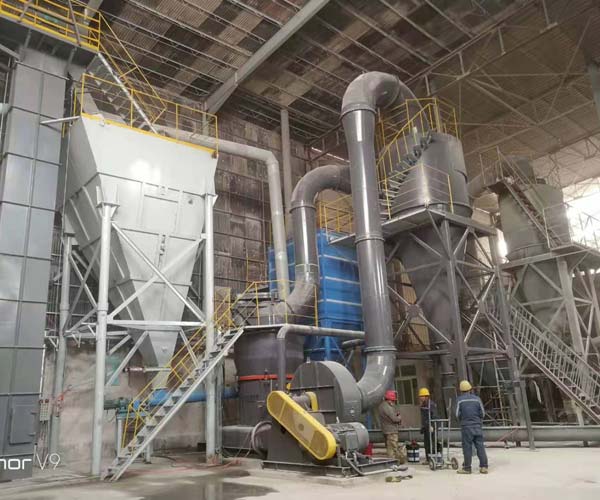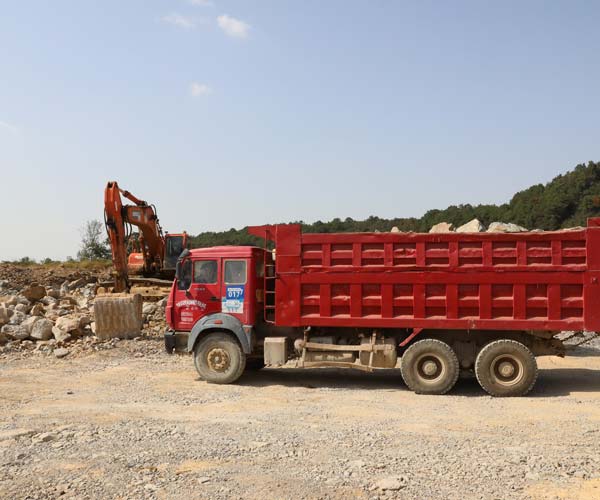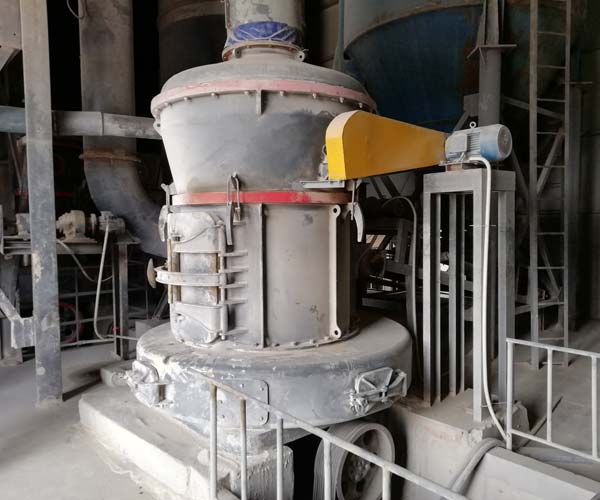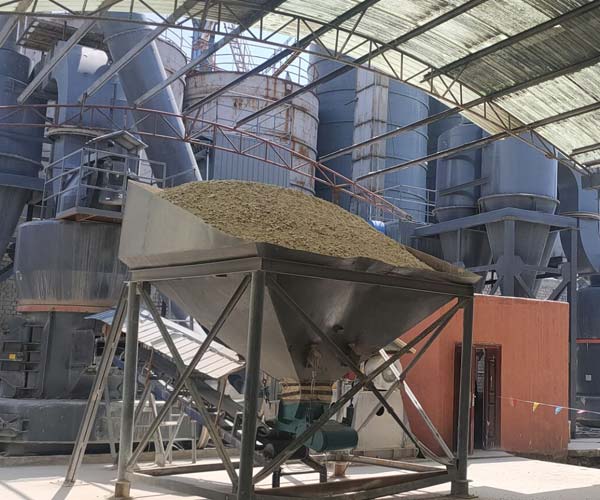
Limestone grinding mill stands as a critical link in the chain of limestone processing, transforming raw limestone into a versatile and valuable resource for various industries. Understanding the key components and types of grinding mills sheds light on the intricacies of the grinding process.
24 Online Service

At the heart of the quarrying process lies the intricate dance of geology. Limestone, composed primarily of calcium carbonate, forms over millions of years through the accumulation of marine organisms and sediments. Geologic forces, such as pressure and heat, transform these sediments into the rock we know as limestone. The quality of limestone varies, and identifying deposits with the right composition is paramount for successful quarrying.
Limestone extraction occurs in various types of quarries, each tailored to the geological characteristics of the deposit and the intended use of the extracted material. Open-pit quarries are the most common, where vast expanses of earth are excavated to reach the limestone beneath the surface. This method is cost-effective and efficient, especially when the limestone deposit is close to the Earth’s crust. On the other hand, underground quarries involve tunneling into the Earth to reach deeper limestone deposits, a method employed when surface extraction is impractical or environmentally sensitive.
Once the quarrying site is determined, the extraction process begins. Primary extraction methods for limestone include drilling and blasting or mechanical excavation with heavy machinery. Explosives may be used to break down the rock into manageable pieces, facilitating easier removal. However, advancements in technology have led to more precise methods, minimizing environmental impact and optimizing resource utilization.
The extracted limestone undergoes further processing, with crushing and grinding transforming it into smaller particles suitable for various applications. Depending on the intended use, the limestone may be further refined through processes like calcination, which involves heating the material to high temperatures to produce quicklime or hydrated lime.
As society places an increasing emphasis on sustainability, the quarrying industry is evolving to minimize its ecological footprint. Sustainable quarrying practices involve rehabilitation efforts to restore quarried areas to a natural state. Additionally, advancements in technology enable the recycling of water used in the extraction process, reducing the overall environmental impact.

The transformation of raw limestone into the fine powders required for various industrial processes involves a crucial step – grinding.
Limestone grinding mills are complex machines that comprise several key components working together to achieve the desired powder fineness. The primary elements include:
The foundation of the grinding mill, the mill body houses the grinding chamber and supports other components. It is typically constructed from sturdy materials to withstand the intense forces generated during the grinding process.
In most grinding mills, grinding media such as steel balls or rods are employed to break down the limestone into smaller particles. The choice of grinding media and its size significantly impact the final product’s characteristics.
Responsible for powering the mill, the drive system ensures the rotation of the mill’s grinding elements. Common drive systems include gear and pinion arrangements or direct drive motors.
Protecting the interior of the mill from wear and tear, liners are replaceable coverings inside the grinding chamber. Different materials and designs are used to optimize the lifespan and efficiency of the grinding mill.
In some mills, a classifier segregates the ground particles based on size, ensuring that the desired fineness is achieved. This is particularly crucial in industries where precise control over particle size distribution is essential.
The limestone grinding process is facilitated by various types of grinding mills, each designed to cater to specific needs and requirements of the industry. Two prominent types include:
Ball mills are widely used in the limestone grinding process and are characterized by their cylindrical shape. Within the rotating cylinder, grinding media cascades and pulverizes the limestone into fine powder. The versatility of ball mills allows for wet or dry grinding processes, making them suitable for various applications.
Vertical Roller Mills represent a modern and efficient alternative to traditional ball mills. In a VRM, limestone is ground between two rollers, and the material is lifted off the grinding table for additional separation and drying. VRMs are known for their energy efficiency and ability to produce a narrower particle size distribution.
The grinding process plays a pivotal role in determining the quality and properties of limestone powder. It is a multifaceted operation that goes beyond mere particle size reduction, influencing factors such as surface area, reactivity, and overall performance. Here are some key aspects highlighting the significance of the grinding process:
Grinding mills allow precise control over the particle size distribution of the final product. Different industries demand distinct particle sizes, and the grinding process enables manufacturers to tailor limestone powder to meet specific requirements.
Finely ground limestone exhibits increased reactivity, making it more suitable for applications in sectors like agriculture and environmental remediation. The increased surface area resulting from the grinding process enhances the limestone’s interaction with other substances.
Consistency in product quality is paramount across various industries. The grinding process ensures that the limestone powder produced adheres to stringent quality standards, providing manufacturers with a reliable and uniform raw material for their processes.
Grinding mills contribute to optimizing the overall performance of downstream processes. Whether it’s in the production of cement, agricultural lime, or other applications, the efficiency of the grinding process directly influences the efficiency of subsequent manufacturing steps.

In the intricate world of industrial processes, Section 4 stands as a crucial chapter in the limestone grinding saga. This section unveils the intricacies of the grinding process, breaking it down step by step. From the role of grinding media to the impact on particle size, and the often underestimated variables of temperature and grinding time.
The journey begins in the quarries where limestone is extracted. This raw material undergoes crushing to reduce it into manageable sizes. This initial step sets the foundation for an effective grinding process.
The crushed limestone then enters grinding mills, which can vary in design and functionality. Ball mills, vertical roller mills, and hammer mills are common choices. Each type has distinct advantages, contributing to the precision of the grinding process.
Post-grinding, a classification process segregates particles based on size. This step ensures that the desired particle size distribution is achieved. It is a critical aspect that impacts the subsequent stages of the limestone utilization process.
Rigorous quality control measures are implemented throughout the grinding process. This includes regular sampling and analysis to monitor particle size, chemical composition, and other relevant parameters. Precise control at this stage is fundamental to meeting the specifications required for various applications.
Grinding media, typically in the form of balls or rods, plays a pivotal role in the comminution process. The choice of grinding media material and size significantly influences the efficiency of the grinding operation.
The grinding media’s primary function is to break down the limestone into smaller particles. As the media collides with the raw material, it imparts energy, resulting in fragmentation. The size and type of grinding media directly impact the final particle size distribution, influencing the product’s physical and chemical properties.
Achieving optimal grinding efficiency is a delicate balance. Excessive wear of grinding media can lead to increased costs and decreased efficiency. Thus, selecting the right type and maintaining the appropriate quantity of grinding media is crucial for sustained performance.
The temperature during the grinding process is a variable often overlooked but with profound implications. Elevated temperatures can cause thermal degradation of limestone particles, affecting both quality and reactivity. Thus, precise temperature control is imperative to maintain the integrity of the final product.
The duration of the grinding process is another critical factor influencing the outcomes. Extended grinding times can lead to finer particles but may also result in increased energy consumption. Balancing grinding time with energy efficiency is vital to achieving the desired particle size without compromising economic feasibility.
The energy-intensive nature of grinding processes necessitates a holistic approach to sustainability. Minimizing grinding time while optimizing energy efficiency not only reduces operational costs but also aligns with environmentally conscious practices.
Our Projects
Copyright © ZENITH, All Right Reserved.
